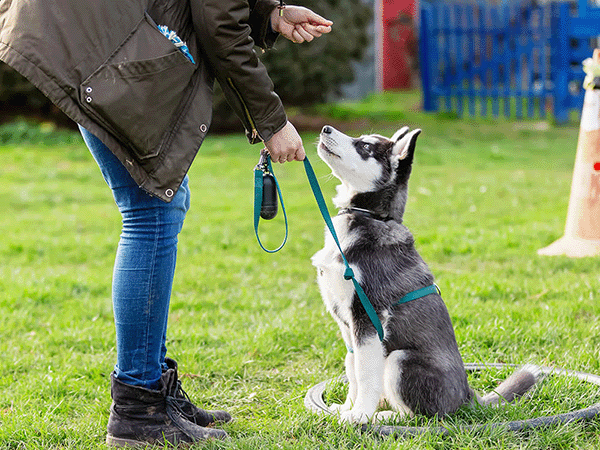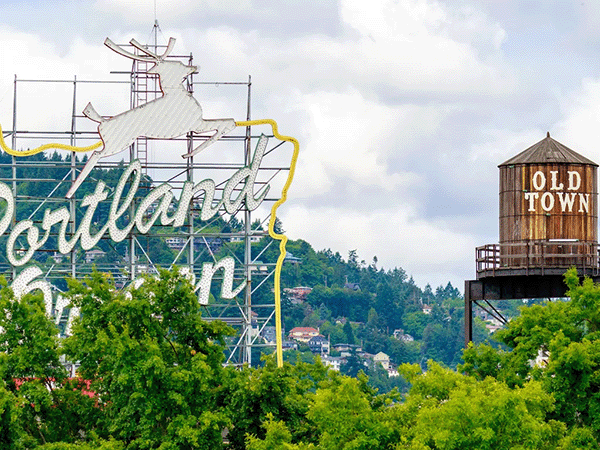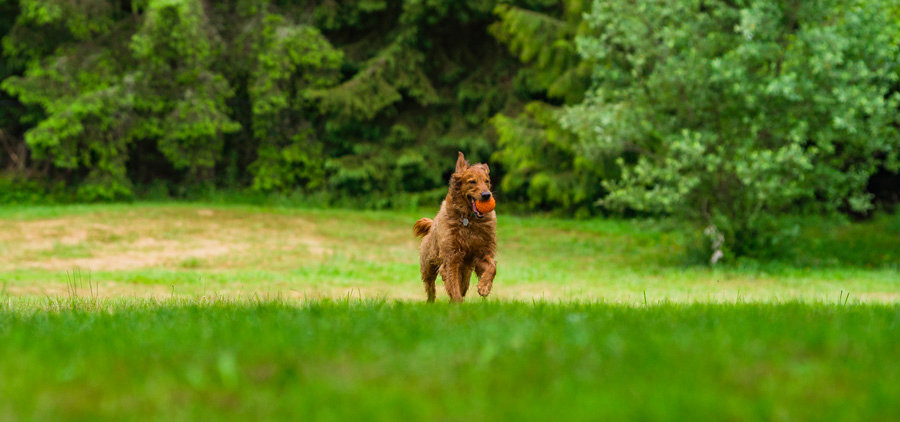Staffordshire Bull Terrier: Loyal Companions For The Right Owners

Discover the Staffordshire Bull Terrier, a breed celebrated for its loyal, playful, and friendly nature. Recognized as a medium-sized dog, Staffordshire Bull Terriers originated in the United Kingdom, where they were initially bred for bull-baiting and later for dog fighting starting in the early 19th century.
In this post, we share insights from nearly 10,000 Sniffspot users, offering practical advice for new and prospective Staffordshire Bull Terrier owners. Whether you’re considering adopting or rescuing a Staffordshire Bull Terrier or already have one, you’ll find valuable tips on how to care for and enjoy life with a loyal Staffordshire Bull Terrier.
“I love the loyalty and unconditional love a Staffordshire Bull Terrier will have for you,” says Sniffspot user Stephanie. And she's right. But what's it really like to live with a Staffy? We'll explore everything about this often-misunderstood breed, from their fascinating history and unique temperament to essential care tips. Whether you're a first-time owner considering a blue Staffy or just curious about these charming companions, we've got you covered. We're drawing on insights from nearly 10,000 real Staffy owners in the Sniffspot community, so get ready to discover the true heart of a Staffordshire Bull Terrier.
Meet the Staffordshire Bull Terrier
- Staffordshire Bull Terrier Quick Characteristics
- About the Staffordshire Bull Terrier
- History and Origin of the Staffordshire Bull Terrier
- Staffordshire Bull Terrier Traits and Characteristics
- What to Expect as a Staffordshire Bull Terrier Dog Owner
- Grooming Needs
- Exercise Needs
- Diet and Nutrition
- Staffordshire Bull Terrier Health Concerns
- How Friendly Are Staffordshire Bull Terriers?
- How to Train Your Staffordshire Bull Terrier
- What Do Owners Love About Staffordshire Bull Terriers?
- What Are the Biggest Challenges for Staffordshire Bull Terrier Owners?
- Is a Staffordshire Bull Terrier Right for a First-Time Dog Owner?
- Advice for Staffordshire Bull Terrier Owners
- Frequently Asked Questions about the Staffordshire Bull Terrier
- Resources for Staffordshire Bull Terrier Owners

Source: Sniffspot Community Breed Survey 2024
Key Takeaways
- Staffies thrive on affection and activity: These loyal companions are eager to please and love being part of the family. Provide plenty of exercise, playtime, and mental stimulation to keep your Staffy happy and engaged.
- Consistent training builds a strong bond: Positive reinforcement methods work best with Staffies. Start training early, be patient, and use rewards to encourage good behavior and address potential stubbornness.
- Create a supportive environment: A secure space, regular exercise, and opportunities for socialization are crucial for a Staffy's well-being. Consider resources like Sniffspot to find dog parks and other safe spaces where your Staffy can play and interact.
Staffordshire Bull Terrier: At a Glance
- Breed Type: Working
- Size: Medium
- Life Expectancy: 12 to 14 years
- Healthy Weight Range: 24 to 38 lbs
- Height Range: 14 to 16 inches
- Temperament: Loyal, Playful, Friendly
- Coat Type: Short
- Color: Black, blue, brindle, fawn, red, white, or other color combinations
Getting to Know the Staffordshire Bull Terrier
According to nearly 10,000 Sniffspot community users who shared real-world data about their Staffordshire Bull Terrier, these dogs are known for their loyalty and friendly nature. The Staffordshire Bull Terrier is also noted for being very social with children and other pets.
When living with a Staffordshire Bull Terrier, 84% of owners indicated that a large house with a fenced yard is ideal. Additionally, 26% of owners found that a rural or suburban area with open spaces is also suitable. This breed is moderately trainable and often benefits from a professional trainer. Owners report that the Staffordshire Bull Terrier responds well to positive reinforcement, consistent routines, and training aids.
Regarding exercise, 53% of Sniffspot owners say their Staffordshire Bull Terrier benefits from moderate exercise daily, including 1-2 hours of activity each day, such as walks and active play sessions. The Sniffspot community considers this breed suitable for first-time owners.
Physical Characteristics of the Staffordshire Bull Terrier
Staffordshire Bull Terriers possess a unique blend of strength and agility, reflected in their distinct physical attributes. Here's a closer look:
Coat and Color Variations
The Staffordshire Bull Terrier sports a short, smooth, and easy-to-maintain coat. This low-shedding coat comes in a delightful array of colors, including black, blue, brindle, fawn, red, and white. You’ll also find them in striking combinations of these colors, adding to their individual charm. This variety in coat colors contributes to the breed’s diverse and appealing appearance. For those interested in learning more about dog breeds and their unique characteristics, resources like the American Kennel Club offer comprehensive information.
Distinctive Features
Beyond their colorful coats, Staffies are recognized for their muscular and compact build. They typically stand between 14 and 16 inches tall and weigh between 24 and 38 pounds. Their broad head, short muzzle, and strong, well-defined features give them a powerful yet friendly presence. This compact and muscular build, combined with their short, smooth coat, makes them a robust and relatively low-maintenance breed. Their sturdy frame and alert expression contribute to their overall appeal as companion animals. If you're looking for places to let your Staffie run and play, check out Sniffspot's listings of dog parks. We offer a variety of safe and enriching spaces for dogs of all breeds and sizes.
Origins of the Staffordshire Bull Terrier
The Staffordshire Bull Terrier’s history begins with the crossbreeding of old Bulldog types with British terriers, creating the first “Bull and Terriers” in the early 1800s. These breeds were originally developed for bull- and bear-baiting. When these activities were outlawed, enthusiasts turned to dog fighting, aiming to combine the Bulldog’s courage with the agility of terriers.
Refinement of the breed involved crosses with Manchester Terriers and the now-extinct English White Terrier, among others. By 1900, two distinct types emerged: the elegant “White Cavalier,” which became the Bull Terrier, and the Staffordshire Bull Terrier, favored by the working class. Supporters of the Staffordshire Bull Terrier formed a dedicated club in 1935, establishing a Breed Standard.
Recognition of the Staffordshire Bull Terrier came gradually. In 1938, championship points were awarded, and the breed gained formal recognition in the U.S. in 1975. Known for its intelligence, health, and loyalty, the Staffordshire Bull Terrier is a popular family pet in the UK, Australia, and South Africa, though it is often confused with the American Pit Bull Terrier in the U.S.
Alexander Belov on Unsplash
Early Ancestry and Development
The Staffordshire Bull Terrier’s story begins in early 1800s England. Old Bulldog types were crossed with British terriers, creating the first “Bull and Terriers.” Bred for the cruel sports of bull- and bear-baiting, these dogs were strong and tenacious. Thankfully, these blood sports were eventually outlawed. Sadly, this led some to dog fighting, seeking to combine the Bulldog’s courage with the terrier’s agility.
Further refinement involved crosses with breeds like the Manchester Terrier and the now-extinct English White Terrier. This process honed specific traits, shaping the Staffordshire Bull Terrier we know today. By 1900, two distinct types emerged: the elegant “White Cavalier,” which became the Bull Terrier, and the stockier Staffordshire Bull Terrier, favored by the working class.
Recognition by Kennel Clubs
Official recognition for the Staffordshire Bull Terrier was a gradual process. A dedicated group of enthusiasts formed a club in 1935, establishing the breed’s standards and paving the way for formal recognition. This key step created the Staffordshire Bull Terrier Breed Standard, detailing the ideal physical and temperamental traits.
In 1938, the breed achieved a significant milestone with the awarding of championship points. However, formal recognition in the United States didn't come until 1975. Today, the Staffordshire Bull Terrier thrives as a beloved family pet in the UK, Australia, and South Africa. In the U.S., it’s sometimes mistaken for the American Pit Bull Terrier, despite distinct characteristics. Known for its intelligence, generally good health, and unwavering loyalty, the Staffordshire Bull Terrier continues to charm dog lovers worldwide.
Staffordshire Bull Terrier Temperament and Traits
- Temperament: Loyal, Playful, Friendly
- Energy Level: Moderate
- Trainability: Moderately trainable – Learns commands with consistent training and practice.
- Grooming Needs: Low maintenance – Requires minimal grooming, such as occasional brushing and baths.
- Good with Kids: Very friendly and social with children
- Good with Other Pets: Very friendly with other pets
Understanding the Staffy Temperament
Staffordshire Bull Terriers, often affectionately called Staffies, are known for their spirited and affectionate personalities. They're generally eager to please and form strong bonds with their families. According to nearly 10,000 Sniffspot community users who shared real-world data about their Staffordshire Bull Terriers, these dogs are truly loyal companions. As one Sniffspot user, Stephanie, shares, "I love the loyalty and unconditional love a Staffordshire Bull Terrier will have for you." This sentiment is echoed by many Staffy owners, highlighting the breed's deeply affectionate nature. You can find more insights from our community in the Sniffspot Community Breed Survey 2024.
Affection and Loyalty
Staffies thrive on human interaction and love being involved in family activities. Their affectionate nature makes them wonderful companions for both adults and children. This breed often forms close bonds with their families, showing unwavering loyalty and a desire to be constantly by their side. This loyalty, combined with their playful and friendly disposition, makes them a cherished member of many households.
Potential for Stubbornness
While generally eager to please, Staffies can exhibit a stubborn streak. This is where training becomes essential. They respond well to positive reinforcement methods, consistent routines, and the use of training aids. Many owners find that enrolling their Staffy in obedience classes or working with a professional dog trainer can be beneficial. This helps establish clear boundaries and ensures the dog understands its role within the family. Choosing the right dog name and using it consistently during training can also contribute to a Staffy's learning process.
Importance of Socialization
Early socialization is key for a well-behaved Staffy. Exposing them to a variety of people, places, and situations from a young age helps them develop into well-adjusted adults. This is particularly important given their sometimes boisterous play style. While generally good with children, supervision is always necessary, especially with very young children. Proper socialization ensures they learn appropriate interactions with both humans and other animals. Sniffspot's dog parks offer a safe and controlled environment for socialization, allowing Staffies to interact with other dogs and people in a positive setting. For Staffies who enjoy water, dog water parks on Sniffspot can provide a fun and enriching socialization experience.
Breed Specific Legislation (BSL)
It's important to be aware of Breed Specific Legislation (BSL) that may affect Staffordshire Bull Terriers. In some areas, laws exist that restrict or ban certain breeds, sometimes including Staffies. These laws are often controversial and based on breed appearance rather than individual dog behavior. Many argue that BSL is unfair and doesn't address the root causes of dog bites, such as poor training and irresponsible ownership. For more information on BSL and its impact on breeds like the Staffordshire Bull Terrier, you can refer to resources like the Wikipedia page on Staffordshire Bull Terriers. It's crucial for potential Staffy owners to research and understand the laws in their area before bringing a dog home.
Life With a Staffordshire Bull Terrier: What to Expect
As a Staffordshire Bull Terrier owner, it’s important to understand their needs and characteristics. Here’s what you can expect based on insights from current Staffordshire Bull Terrier owners:

Source: Sniffspot Community Breed Research 2024
Grooming Your Staffy
Staffordshire Bull Terriers have low maintenance grooming needs. Their short coat requires minimal care, with occasional brushing and baths to keep it smooth and healthy. Although their coat is short and low-shedding, regular brushing helps maintain its condition.
Exercise Essentials for Your Staffy
Staffordshire Bull Terriers are active dogs that require 1-2 hours of exercise daily. They thrive on walks and active play sessions, including games like tug-of-war and fetch. Without sufficient exercise, they may exhibit undesirable behaviors due to excess energy. Regular exercise and mental stimulation are crucial for their well-being.
Exercise Recommendations for Puppies
Puppies have different exercise needs than adult dogs. A good rule of thumb is five minutes of exercise per month of age, twice a day. So, if you have a 3-month-old Staffy puppy, aim for roughly 15 minutes of exercise twice daily. This can include short walks, playtime in a securely fenced area, or even indoor games if the weather isn't cooperating. Remember to keep exercise sessions brief and avoid overexertion, as their joints are still developing. As your puppy grows, you can gradually increase the duration and intensity of their exercise. For more tips on exercising your puppy, check out this helpful guide.
Mental Stimulation
Keeping your Staffordshire Bull Terrier mentally stimulated is just as important as physical exercise. These intelligent dogs thrive on challenges and activities that engage their minds. Puzzle toys are a great option, encouraging problem-solving and providing a rewarding treat. Training sessions, even short ones, reinforce good behavior and strengthen your bond with your dog. Interactive games like hide-and-seek or fetch in a safe, enclosed dog park also provide excellent mental stimulation. A bored Staffy can sometimes develop unwanted behaviors, so a good mix of physical and mental activities is key for a happy and well-adjusted dog. You can find more enrichment ideas for your dog on the Sniffspot blog.
Feeding Your Staffordshire Bull Terrier
To keep your Staffordshire Bull Terrier healthy, feed them a balanced diet suitable for their moderate energy levels. About 55% of our community feeds their Staffie commercial dry kibble. They generally need 1.5 to 2.5 cups of food daily, depending on their activity level, age, and ideal weight (24 to 38 lbs).
Staffordshire Bull Terrier Health
Common health issues in Staffordshire Bull Terriers include skin conditions (e.g., allergies, dermatitis) and digestive problems (e.g., bloating, sensitive stomach). Approximately 51% of owners report skin issues such as allergies and infections, while 29% experience digestive troubles. Ear infections are also common, affecting 26% of Staffies. Regular vet check-ups and attention to these potential issues can help maintain their health.
Potential Health Issues
Common Ailments
Staffordshire Bull Terriers are generally healthy dogs, but like all breeds, they have some common health concerns. According to nearly 10,000 Sniffspot users, skin conditions like allergies and dermatitis are common, affecting about 51% of Staffies. Digestive issues, such as bloating and food sensitivities, are reported by 29% of owners. Ear infections also pop up in about 26% of Staffordshire Bull Terriers. Regular checkups with your veterinarian and proactive care can help manage these potential problems.
This information comes directly from our Sniffspot community and offers helpful insights. However, remember that each dog is unique. These numbers reflect the experiences of Sniffspot users with their Staffies and may not be representative of all Staffordshire Bull Terriers. Always talk to your vet about your dog's individual health needs.
Lifespan and Costs
Staffordshire Bull Terriers typically live for 12 to 14 years, offering years of companionship. If you're thinking about welcoming a Staffy into your home, consider the financial commitment beyond the initial adoption or purchase price. Regular vet care, including shots and annual exams, is a must. Feeding your Staffy a good quality diet suited to their age and how active they are is another ongoing cost. Grooming a Staffy is pretty easy because of their short coat, but you'll still need to brush them, give them occasional baths, and trim their nails. It's also smart to be prepared for the potential costs of treating common health issues, like the ones we discussed above. Planning for these expenses will help you provide a happy, healthy life for your new furry friend.
Is the Staffordshire Bull Terrier a Friendly Breed?
Staffordshire Bull Terriers are known for their friendly and affectionate nature. They adapt well to family life and get along with people of all ages and other pets. Training and positive reinforcement enhance their natural friendliness and reduce undesirable behaviors.

Source: Sniffspot Community Breed Survey 2024
- “She is loving and loves to cuddle. Great with people of all ages.” – Twyla
- “My sweet Asher is the biggest, sweetest cuddler. She has always been my best friend and been by my side.” – Logan
- “She gives everyone a chance—even some of the really fussy foster siblings she’s had to deal with!” – CL
Training Your Staffordshire Bull Terrier
Training is essential for Staffordshire Bull Terriers, whether you’re adopting a puppy or an adult. Proper training helps prevent undesirable behaviors and ensures your Staffie’s well-being.
Staffordshire Bull Terriers respond well to positive reinforcement, which includes treats, praise, and rewards. Based on feedback from the Staffie community:
- Positive Reinforcement (91%): Use treats, praise, and rewards to encourage good behavior.
- Consistent Routines (55%): Maintain a regular training routine to help your dog understand expectations.
- Training Aids (38%): Use tools like martingale collars and walking harnesses to aid training.
As a breed with a history of bull-baiting and dog fighting, Staffordshire Bull Terriers benefit from professional training to manage their instincts and ensure they are well-adjusted companions.
Why Staffy Owners Adore Their Dogs
We asked Sniffspot Staffie owners what they love the most about their Staffordshire Bull Terrier pups, and here’s what they had to say:
- My sweet Asher is the biggest, sweetest cuddler. She has always been my best friend and been by my side. (Logan)
- She gives everyone a chance—even some of the really fussy foster siblings she has had to deal with! (CL)
- Affectionate, loyal, smart, very responsive to training. (Anon)
Challenges of Staffordshire Bull Terrier Ownership
Similarly, Staffie owners shared some of the biggest challenges of living with their Staffordshire Bull Terrier:
- Aggressive nature when caught off guard (e.g., animals and people in the yard). Ours is 100% dead, so this absolutely adds to it. (Stephanie)
- Her strength and occasional stubbornness. Also, society’s misconception of pitties. (Mackenzie)
- The stigma around the breed is very hard to deal with at first for first-time pitbull owners. But it’s all about how you raise your dogs and the environment they are in. (Logan)
Addressing Separation Anxiety
Like many breeds that form strong bonds with their families, Staffordshire Bull Terriers can experience separation anxiety. This often shows up as distress and unwanted behaviors when they're left alone, sometimes for even short periods. A Staffy experiencing separation anxiety might shadow you as you prepare to leave, whine or bark excessively, or even try to block the door. You might come home to find evidence of their distress, such as destroyed items, accidents, or even injured paws from escape attempts. Understanding the signs and taking proactive steps can significantly improve your Staffy's well-being and minimize these behaviors.
Creating a safe and comfortable space for your Staffy can help ease their anxiety. This could be a quiet corner, a crate, or a specific room where they feel secure. Calming aids, such as pheromone diffusers or anxiety wraps, can also be beneficial. Regular exercise and mental stimulation are key; a tired Staffy is less likely to be anxious. Puzzle toys, training sessions, and playtime at a safe, private dog park can provide the physical and mental outlets they need.
Establishing a consistent routine is crucial for managing anxiety. Predictable feeding times, walks, and playtime can create a sense of stability for your Staffy. Positive reinforcement training can also be incredibly effective. Start with short absences and gradually increase the duration, rewarding your Staffy for calm behavior. If your Staffy's anxiety is severe or doesn't improve with these strategies, consider consulting a professional dog trainer or a veterinary behaviorist. They can assess your dog's specific needs and develop a tailored training plan. With patience, understanding, and the right approach, you can help your Staffy overcome separation anxiety and live a happier, more relaxed life.
Are Staffies Good for First-Time Owners?

Source: Sniffspot 2024 Community Dog Breed Survey
According to 54% of our Sniffspot community, Staffordshire Bull Terriers are a great choice for first-time dog owners. This is due to their loyal nature and moderate exercise needs. Staffordshire Bull Terrier owners say it best:
- These dogs have an absolute love for humans and are moderately tempered. Mine loves to play but also loves to be a couch potato. (CP)
- She is easy and adapts to the environment. She sleeps most of the time. (Jeanne)
- She is loving and loves to cuddle. Great with people of all ages. (Twyla)
Tips for Staffordshire Bull Terrier Owners
Luckily, our Sniffspot community is full of experienced, trustworthy Staffie owners. These Staffordshire Bull Terrier breed owners share the most essential dog breed tips and advice for prospective or new dog owners:
Finding a Staffordshire Bull Terrier
Considering Adoption
When you’re ready to welcome a Staffordshire Bull Terrier into your life, consider adopting a dog from a shelter or rescue organization. It's a wonderful way to give a deserving dog a loving home. Plus, adopting often comes with the added benefit of lower initial costs compared to purchasing from a breeder. Many shelters also cover initial vetting, like spaying/neutering and vaccinations.
Before you start your search, take some time to research breed-specific rescues. These organizations specialize in Staffordshire Bull Terriers and can offer valuable insights and support. They often have a network of foster homes, which allows them to really get to know each dog's personality and needs. This can be incredibly helpful in finding the right match for your lifestyle and family.
When considering adopting a Staffordshire Bull Terrier, it's essential to understand the breed's characteristics. According to insights from nearly 10,000 Sniffspot community users, Staffordshire Bull Terriers are known for their loyalty and friendly nature. They are particularly social with children and other pets (Sniffspot Community Breed Survey 2024). This makes them a great addition to many families.
54% of Sniffspot community members believe that Staffordshire Bull Terriers are a great choice for first-time dog owners. Their loyal disposition and moderate exercise requirements make them a good fit for new pet parents. As one owner noted, "These dogs have an absolute love for humans and are moderately tempered. Mine loves to play but also loves to be a couch potato" (Sniffspot Community Breed Survey 2024).
It's also important to consider the environment where a Staffordshire Bull Terrier will thrive. 84% of owners indicated that a large house with a fenced yard is ideal, while 26% found that a rural or suburban area with open spaces is also suitable (Sniffspot Community Breed Survey 2024). This breed benefits from 1-2 hours of daily exercise, including walks and active play sessions. Finding safe and enriching places for your Staffy to play and exercise is important.
Understanding the Staffordshire Bull Terrier
- Be consistent in training. Don’t believe everything you hear and read concerning pitbull terriers. (BA)
- Be mindful of their anxiety and background. (Dena)
Addressing Anxiety in Your Staffy
- Be prepared to train and address anxiety issues quickly. (Ashleigh)
- If you adopt them (or any breed) as an older dog, realize that they have fully formed opinions and traumas that you must work with that are not a reflection on you as a human or dog owner. Try to meet them where they are. If you want a pet that will be 100% trainable, go younger. (Laura D.)
Channeling Your Staffy's Energy
- Be ready to train and find outlets for your dog’s energy. (Melissa)
- Learn activities that wear them out, such as sniff walks or any nose work. Or just running and playing. (Twyla)
Being a Responsible Staffy Owner
- Be responsible and train your dog. Learn their personality so you can read the signs that they are uncomfortable or feeling anxious. This can avoid potentially messy situations. (All dogs get in scuffles, but it’s the pitbull bites that make the news and perpetuate the stereotype). (CL)
- One of the biggest challenges of owning a pitbull is overcoming the breed’s unfair stigma and ensuring they are properly socialized to prevent any behavioral issues. Additionally, pitbulls require consistent training and a lot of physical exercise to keep them happy and well-behaved. (Katherine)
Frequently Asked Questions about the Staffordshire Bull Terrier
Staffordshire Bull Terrier Lifespan
The average lifespan of a Staffordshire Bull Terrier is typically between 12 to 14 years.
Staffordshire Bull Terrier Size
An adult Staffordshire Bull Terrier weighs between 24 to 38 lbs and stands between 14 to 16 inches tall.
Grooming Requirements for a Staffy
Staffordshire Bull Terriers require low-maintenance grooming. Regular grooming helps to keep their coat healthy and manageable. They have a short coat, which is well-suited for protection and is considered low-shedding.
To maintain your Staffordshire Bull Terrier’s coat, it’s important to brush weekly to keep it smooth. Among working breeds, Staffordshire Bull Terrier grooming is categorized as relatively easy.
How Much Exercise Does a Staffy Need?
Staffordshire Bull Terriers require moderate activity each day. Though one of the most popular dog breeds, Staffies are classified as moderately athletic, somewhat high-energy breed.
Staffies are excellent companions and thrive with between 1-2 hours of activity each day, including walks and active play sessions. Owners note that their dogs particularly enjoy tug-of-war, playing with squeaky toys, and chasing/playing with a ball or frisbee.
If medium breeds like Staffies don’t receive enough exercise, they may develop unwanted behaviors. These dogs need ongoing training, mental stimulation, and consistent exercise to channel their energy effectively.
Are Staffordshire Bull Terriers Good with Children?
According to our data, Staffordshire Bull Terriers are very friendly and social with children.
Do Staffies Get Along with Other Pets?
Our research indicates that Staffordshire Bull Terriers are very friendly with other pets.
Best Food for a Healthy Staffordshire Bull Terrier
As a moderate energy breed, the diet of your Staffie is crucial. A significant 55% of our community feed their Staffie commercial dry kibble.
For optimal health, Staffies should consume 1.5 to 2.5 cups of vet-recommended food to maintain a healthy weight around 24 to 38 lbs. The exact amount and type of food will depend on your Staffordshire Bull Terrier’s sex, activity level, and age.
Common Staffy Health Issues
The Staffordshire Bull Terrier breed is particularly prone to skin conditions like allergies, yeast infections, impetigo, ringworm, alopecia, and folliculitis, as well as digestive issues like constipation, diarrhea, vomiting, and lack of appetite. Our data shows that 51% of Staffordshire Bull Terrier owners reported skin conditions such as allergies, yeast infections, impetigo, ringworm, alopecia, and folliculitis. Staffie’s risk for these health issues increases as they age.
Additionally, 29% reported digestive issues like constipation, diarrhea, vomiting, and lack of appetite. Finally, 26% of Staffordshire Bull Terrier owners indicated their dog struggles with ear infections caused by allergies, ear mites, or contact dermatitis, which are common Staffie health concerns. If you have concerns about any of these health issues, consult your Staffie’s veterinarian.
Resources for Staffy Owners
Whether you’re a current Staffordshire Bull Terrier dog owner or you’re considering adopting a Staffie, Sniffspot is here to lend a helping hand. Here are some of the most relevant resources for Staffordshire Bull Terrier owners:
- Most Popular Staffordshire Bull Terrier Names
- Pit Bull Animal Rescues
- Staffordshire Bull Terrier Club of America
Sources:
- What’s the Difference Between the American Staffordshire Terrier and the Staffordshire Bull Terrier? (Modern Dog)
- Breed History (Staffordshire Bull Terrier Club of America)
Finding the Perfect Space for Your Staffordshire Bull Terrier
At Sniffspot, we understand the unique needs of Staffordshire Bull Terriers. Given their energetic nature and love for play, finding the right environment for your Staffy is crucial. These dogs thrive on activity. As our Sniffspot Community Breed Survey 2024 revealed, Staffordshire Bull Terriers need 1-2 hours of exercise daily. Think brisk walks, invigorating games of fetch, and even a friendly tug-of-war. Without enough outlets for their energy, they might exhibit some undesirable behaviors, simply because they're bursting with unused pep! A spacious home with a fenced yard, ideally in a suburban or rural setting with open spaces, offers the perfect backdrop for their playful antics. In fact, 84% of Staffy owners in our survey reported that a large house with a fenced yard is the ideal living situation.
Creating a stimulating and enriching environment is equally important. Our survey also highlighted that Staffies are incredibly social creatures. They genuinely enjoy the company of children and other pets. Providing opportunities for socialization is key to nurturing their friendly disposition and preventing any potential anxieties. This is where Sniffspot can truly make a difference. We offer a diverse network of dog-friendly parks and spaces designed with your Staffy's needs in mind. Whether you're looking for a securely fenced area for a safe romp or stimulating trails for an adventurous sniffari, Sniffspot has something to offer.
For those extra hot days, consider checking out our listings for dog water parks. It's the perfect way for your Staffy to cool off and have a blast! Beyond physical activity, mental enrichment is just as vital for a happy and well-adjusted Staffy. These intelligent dogs thrive on learning and engaging their minds. Consider incorporating activities like nose work or puzzle toys into their routine. Even a simple training session using positive reinforcement can be a fun and rewarding experience for both of you. Our community found that treats, praise, and rewards are highly effective in encouraging positive behaviors and strengthening your bond with your furry friend. Supplementing a large, fenced yard with regular trips to a Sniffspot can provide the perfect balance of physical exercise, mental stimulation, and social interaction that your Staffordshire Bull Terrier needs to truly flourish.
Most recent articles
Related articles
Top dog guides per area
Dog training guides

Dog Food Aggression: Why You Shouldn't Punish It
Does your dog ever growl when you walk by their food dish? Maybe they get possessive of treats, carrying them far away and giving you side-eye when you start to approach — or snarling at your other pets or children if they get too close.

Best Dog Fields in the US: 25+ Wide-Open Spaces for Your Pup to Run Free
The best dog fields in the US offer something that traditional enclosed parks simply can't match: acres of open space where your pup can truly stretch their legs and run at full speed. From Colorado's 470-acre prairie meadows to Tennessee's award-winning "Outback," these wide-open spaces allow dogs to roam, explore, and exercise naturally while engaging instincts that cramped urban parks suppress.

The Ultimate Guide to Scent Training for Dogs
Your dog's nose is an amazing tool. Did you know they have 40 times the olfactory receptors than humans? Scent training for dogs taps into this superpower, turning everyday moments into exciting sniff-fests. It's enriching for all types of dogs – reactive, shy, or simply adventurous. Ready to explore the world of scent work for dogs? Let's get started.

Service Dog Training Costs: DIY vs. Pro
More than 80 million Americans rely on their service dogs to help them navigate the world. Task-trained assistance animals perform a huge range of life-changing—in many cases, life-saving—services: These dogs act as eyes for visually impaired handlers, provide mobility support, alert to seizures and blood sugar crashes, interrupt anxiety attacks, remind their people to take medications, and so much more.

How to Deal With Puppy Potty Training Regression
You thought those dreaded middle-of-the-night potty breaks were over. You were finally free from cleaning up puppy puddles. Then, suddenly, your furry friend starts having accidents again. It's frustrating, right? This puppy potty training regression is more common than you think. Don't worry; we'll help you get your pup back on track. We'll cover the common causes, offer practical solutions, and give you actionable steps to tackle this challenge together.

Dirty Dog Syndrome: Causes, Solutions, and Prevention
It's a cringe-worthy moment every dog owner dreads: your furry friend chowing down on something truly disgusting. If your dog has a penchant for poop, you're dealing with coprophagia. It's more common than you think, and thankfully, often manageable. This article explores the reasons behind dirty dog syndrome, from instinct to learned behavior. We'll also give you practical tips to help break this unpleasant habit.

How to Train Your Rescue Dog: A Complete Guide
* All Sniffspot articles are reviewed by certified trainers for quality, please see bottom of article for details *
Dog enrichment guides

Best Dog Water Parks in the US: 15+ Amazing Splash Destinations for Your Pup
Do you have a water-loving dog looking to burn some energy? There are countless dog parks to visit throughout our country — but some of them become far too hot in the midday sun to be safe for your pets to play. That’s why we’ve put together a list of some of the best dog water parks throughout the United States! At these locations, your pup can frolic, splash, and swim to their heart’s content.

Best Dog Fields in the US: 25+ Wide-Open Spaces for Your Pup to Run Free
The best dog fields in the US offer something that traditional enclosed parks simply can't match: acres of open space where your pup can truly stretch their legs and run at full speed. From Colorado's 470-acre prairie meadows to Tennessee's award-winning "Outback," these wide-open spaces allow dogs to roam, explore, and exercise naturally while engaging instincts that cramped urban parks suppress.

Best Toys for Herding Dogs: Keeping Your Pup Happy & Engaged
Herding dogs are amazing, intelligent companions. But that also means they need more than just a simple game of fetch. Finding the right toys for herding dogs is key to keeping them happy and stimulated. This article explores some of the best toys for herding dogs, including options specifically for breeds like Border Collies and Australian Shepherds. We'll help you discover the perfect herding toys for dogs to tap into their natural instincts and keep them entertained for hours.

Tough Dog Toys for Aggressive Chewers: A Practical Guide
Does your dog destroy every toy you give them? Is your house littered with the remnants of plush toys? Are you tired of wasting money on "indestructible" dog toys for aggressive chewers that don't last? Then this post is for you. We'll cover everything you need to know about finding the best dog toys for aggressive chewers, so you can finally give your pup something safe, durable, and fun.

Daily Exercise Calculator: How Much Exercise Does Your Dog Need?
Everyone knows dogs need exercise, but how much is enough? Walks are great, but creating a truly balanced fitness plan means understanding your dog's specific needs. This post helps you develop a daily exercise calculator for your dog, considering breed, age, and lifestyle. We'll cover fun activities, understanding exercise intensity, and recognizing when your pup has had enough. Let's create a plan that keeps your dog happy and healthy!

Complete Guide To Herding With Dogs
* All Sniffspot articles are reviewed by certified trainers for quality, please see bottom of article for details *

Dog Enrichment Activities: The Ultimate Guide
Ever feel like your dog is restless or bored? They may be getting enough exercise, but still need more. That's where enrichment activities for dogs come in. Giving your dog opportunities to sniff, explore, and problem-solve can make a world of difference. Whether you have a puppy, adult, or senior dog, enriching their environment is key for their well-being. Let's explore how to add cognitive enrichment for dogs, even tailoring activities to your dog's breed with breed specific enrichment and fun enrichment games for dogs.
Dog reactivity guides

Rottweiler Aggression: Truth vs. Myth
Many dogs have gotten a bad reputation over the years for being "dangerous breeds." Rottweilers are among them. Like pit bulls and other large, blocky-headed types of dogs, these powerful and beautiful animals are often assumed to be aggressive.

Best Dog Fields in the US: 25+ Wide-Open Spaces for Your Pup to Run Free
The best dog fields in the US offer something that traditional enclosed parks simply can't match: acres of open space where your pup can truly stretch their legs and run at full speed. From Colorado's 470-acre prairie meadows to Tennessee's award-winning "Outback," these wide-open spaces allow dogs to roam, explore, and exercise naturally while engaging instincts that cramped urban parks suppress.

What Is a Reactive Dog? A Practical Guide for Owners
Does your dog suddenly transform into a barking, lunging Tasmanian devil on walks? It's stressful for both of you. If this sounds familiar, you might have a reactive dog. Understanding what is a reactive dog is the first step to calmer walks. We'll explore the common triggers and give you actionable strategies to manage and modify this behavior. Let's turn those stressful walks into enjoyable outings.

How to Socialize a Reactive Dog: A Step-by-Step Guide
Does your dog display reactivity to other pets or people? Maybe they’re a new rescue pup and are still settling into your home. Or they were sick growing up, so you missed their critical socialization period. Possibly they’ve had a bad experience after being raised as a normal puppy.

What Is a Reactive Dog? A Complete Guide
Is your dog overly excited or fearful around other dogs? Do they bark, lunge, or whine? You might have a reactive dog. Many dog owners face this challenge. Understanding what a reactive dog is is the first step to helping them. This guide explores the common causes of dog reactivity, explains what makes a dog reactive, and offers practical tips and resources. Let's work together to build a stronger bond with your dog and enjoy stress-free walks.

9 Best Online Communities for Reactive Dog Parents
Does your dog's reactivity make walks stressful? You're not alone. Many dog owners face similar challenges. This guide offers practical advice and support for managing reactivity, including finding the best online dog training for reactive dogs. We'll connect you with reactive dog support groups, share training tips, and explore resources like the best dog training app for reactive dogs. Let's build a stronger bond with your dog, together.
* All Sniffspot articles are reviewed by certified trainers for quality, please see bottom of article for details *
How To Groom a Reactive Dog
* All Sniffspot articles are reviewed by certified trainers for quality, please see bottom of article for details *
Sniffspot community guides

The State of Public Dog Parks Across the United States
From 2009 to 2020, there was a 40 percent increase in the development of public dog parks. Designated spots for canine exercise have become commonplace in every major city in North America — many pet owners won’t even consider renting an apartment that doesn’t have its own fenced-in pet area for their canine companions.

Best Dog Fields in the US: 25+ Wide-Open Spaces for Your Pup to Run Free
The best dog fields in the US offer something that traditional enclosed parks simply can't match: acres of open space where your pup can truly stretch their legs and run at full speed. From Colorado's 470-acre prairie meadows to Tennessee's award-winning "Outback," these wide-open spaces allow dogs to roam, explore, and exercise naturally while engaging instincts that cramped urban parks suppress.

How This Family is Affording Their Dream Property Through Renting it Hourly to Dogs
Thousand Oaks, California has been a safe haven for Sniffspot host, Jen, since childhood. Having grown up in busy Santa Barbara, Jen, an introvert from an early age, would seek out solitude and serenity away from tourists attractions and droves of people visiting from elsewhere. “My grandparents own 60 acres about a 30 minute drive from here, and I grew up spending every summer and every holiday visiting them on the ranch,” Jen explained. “In Santa Barbara, we wouldn't go to the beach on the weekend because that's where everybody was, so you'd find places off the beaten path where the tourists weren't. For me, the ranch was just my happy place.”

Host Tips: Ellen K. What Makes Sniffspot Successful for Me
Ellen is the host of Country Pasture Getaway, one of Sniffspot's most popular sniff spots. She has taken the time to write up the lessons she has learned about how to be a great sniff spot host.

How this Oregon Farmer is Making a Business From Renting Her Land to Dogs
Just 20 minutes outside of the busy city of Portland, Oregon, and settled right on the banks of the Columbia River, you’ll find what countless visitors have flocked to the area in search of – mountain views, crisp, clean air, and running water for miles. What you might not expect to find, however, is a hidden oasis designed just for dogs and their people, owned and operated by a farming couple and enjoyed by visitors on two legs, and four.

Host Tips: Fran T. Providing Great Guest Service at our Spot
Fran is the host of Ranch Setting, one of Sniffspot's most popular spots. She has taken the time to write up the lessons she has learned about how to be a great Sniffspot host.

How Sniffspot Helped a Nervous Rescue Work Through His Fears and Change His Family’s Life
This is the story of a family and dog rescuing each other.
Top dog trainers in the US

The Best Dog Trainers in the United States of 2025
This is a list of the top dog trainers in the United States, based on votes from the Sniffspot community and the general public.
The Best Dog Trainers in Seattle, WA of 2025
This is a list of the top dog trainers in Seattle, WA, based on votes from the Sniffspot community and the general public.
The Best Dog Trainers in Portland, OR of 2025
This is a list of the top dog trainers in Portland, OR, based on votes from the Sniffspot community and the general public.
The Best Dog Trainers in Los Angeles, CA of 2025
This is a list of the top dog trainers in Los Angeles, CA, based on votes from the Sniffspot community and the general public.
The Best Dog Trainers in New York, NY of 2025
This is a list of the top dog trainers in New York, NY, based on votes from the Sniffspot community and the general public.
City dog parks guides

Top 10 Indoor Dog Parks: A US Guide
Looking for a space to play with your dog no matter what the weather’s like outside? Look no further than our list of the best indoor dog parks in the United States! These climate-controlled spaces are growing in popularity as pet ownership increases throughout the country. As a bonus, many of them also offer dog training, boarding, grooming, or daycare services on the premises.

Best Dog Fields in the US: 25+ Wide-Open Spaces for Your Pup to Run Free
The best dog fields in the US offer something that traditional enclosed parks simply can't match: acres of open space where your pup can truly stretch their legs and run at full speed. From Colorado's 470-acre prairie meadows to Tennessee's award-winning "Outback," these wide-open spaces allow dogs to roam, explore, and exercise naturally while engaging instincts that cramped urban parks suppress.

Best Dog Parks in the US: Ultimate Guide to Public & Private Off-Leash Adventures
Is your pup giving you those pleading "let me run free" eyes? Whether you're a new dog parent or a seasoned pro looking for fresh adventures, finding the perfect off-leash paradise for your furry friend can feel ruff! From sun-soaked California beaches where your water-loving lab can make a splash to mountain trails in Vermont where your adventure buddy can chase every scent, we've sniffed out the 15 best dog parks across America.

Dog Parks Near Me: Las Vegas Edition
Looking for the perfect dog park near me in Las Vegas? You're in luck! This guide explores all the best options for your pup, from public dog parks to private dog parks near me on Sniffspot. We'll help you find the ideal spot for playtime, socializing, and fresh air. Plus, we'll cover essential etiquette and safety tips to ensure a happy visit for everyone. Get ready for some tail-wagging fun!

Top Sniffspot Locations: Find the Perfect Dog Park
Looking for the perfect dog park? Whether you need a wide-open public space or a private, fenced-in spot, this guide will help you find the best dog parks across the US. We'll cover top-rated public parks, the perks of private dog parks, and even explore Sniffspot locations – giving your pup a safe and fun place to play. Ready to find your dog's new favorite spot? Let's go!

Sniffspot: Portland's Best Private Dog Parks
Ready to discover Portland's best dog parks? Whether you're looking for a public park or the unique experience of a private Sniffspot, this guide has you covered. We'll help you find the perfect spot for your pup, with tips on what to bring, how to prepare, and even understanding dog body language. Plus, we'll explore some top Portland dog parks, including public and Sniffspot options, so you can plan your next dog-friendly adventure in the City of Roses.
Portland Dog Parks: Public & Private Options
This page is about public city dog parks and also includes Sniffspot private dog parks. Sniffspot is the largest network of private dog parks for rent in the world!
Small Dog Park Guide: Tips for Finding the Perfect Spot
Finding the perfect dog park for your small breed can be ruff! Big dog parks can be overwhelming, even dangerous, for little pups. This comprehensive guide helps you sniff out the best small dog parks for your pint-sized companion, covering everything from essential safety checklists to top recommendations for small dog parks across the US—including both public spots and private dog parks.
Dogs breeds

German Shepherd Dogs: Insights From Real Dog Owners
The German Shepherd Dog (GSDs) are known for their intelligence, loyalty, and striking appearance. They're also incredibly versatile, excelling as working dogs and devoted family companions. This guide covers everything you need to know about GSDs, from understanding their unique traits and rich history to practical advice on training and care. So, whether you're a seasoned GSD owner or just starting your research, let's explore this remarkable breed together.

Best Dog Fields in the US: 25+ Wide-Open Spaces for Your Pup to Run Free
The best dog fields in the US offer something that traditional enclosed parks simply can't match: acres of open space where your pup can truly stretch their legs and run at full speed. From Colorado's 470-acre prairie meadows to Tennessee's award-winning "Outback," these wide-open spaces allow dogs to roam, explore, and exercise naturally while engaging instincts that cramped urban parks suppress.

Labrador Retriever: Ultimate Guide by Owners
Discover the Labrador Retriever, a breed celebrated for its playful nature, affectionate temperament, and trainability. Labradors are known for their friendly demeanor and adaptability, making them perfect family companions and versatile working dogs. As one of the most popular types of retrievers, Labs are ideal companions for various lifestyles and are recognized by the American Kennel Club (AKC) as an excellent breed for families.

Golden Retriever Advice: The Complete Owner's Guide
Golden Retrievers: they're gorgeous, playful, and incredibly popular. But before you welcome one into your home, you need the right golden retriever advice. This guide draws on the wisdom of nearly 10,000 Golden Retriever owners, offering practical tips for caring for these affectionate dogs. From understanding their high energy levels to mastering grooming and training, we'll cover everything you need to know. So whether you're already a devoted Golden parent or just starting your research, get ready to learn how to give your furry friend the best possible care.

American Staffordshire Terrier: Your Complete Guide
Think American Staffordshire Terriers are tough? Think again. While their muscular build might intimidate some, these dogs are known for their playful and loyal personalities. This guide draws on the experience of nearly 10,000 AmStaff owners to reveal the truth about this often misunderstood breed. Want to learn more about caring for an American Staffordshire Terrier? You're in the right place.

Australian Shepherd Facts: Breed Info & Care Guide
Discover the Australian Shepherd, an AKC breed celebrated for its trainable, playful, and affectionate nature. Despite its name, the Australian Shepherd is actually a native breed to the United States, originally developed to breed on farms and ranches. Considered a medium dog, Australian Shepherds were bred for herding beginning in the 1950s. As one of the high-energy breeds, Aussies are known for their boundless energy and need for regular exercise, including aerobic exercise.

Essential Husky Facts for Owners: Breed Guide
Discover the Siberian Husky, a breed celebrated for its curious, intelligent, and loyal nature. Considered a medium-sized dog, Siberian Huskies were originally bred in Russia for sledding, beginning in the early 20th Century. Today, they're one of the most popular active breeds in North America.




























